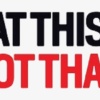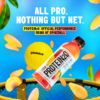Retailers are drinking up the healthy changes in the beverage category with more active promotions of clean labels and purposeful appeal.
The future of beverages has decidedly arrived.
Grocery store shelves that once held conventional soft drinks are now filled with beverages that boast clean labels and benefits ranging from probiotics to protein. As the better-for-you beverage category evolves, retailers are jumping aboard to find ways to effectively market these futuristic beverages in the digital age.
Social media platforms have become essential for manufacturers to get their brands on consumers’ radar, and retailers have been aptly following suit as they seek to more visibly compete with online grocery outlets. Jordan Rost, vice president of consumer insights at New York-based Nielsen, says consumers tend to be more willing to try new products online versus in-store, and retailers can benefit from finding ways to market better-for-you beverages seamlessly across digital platforms and distribution channels.
“You see more and more grocers investing in platforms like Facebook, Instagram and Pinterest, and telling their stories in a really visual way, and thinking about what brands and products are going to help them tell that story,” says Rost. “Increasingly, you see retailers turning to healthful brands, smaller brands and multiple brands to really hammer home that connection with the consumer.”
To that end, grocery retailers are increasingly getting creative on social media to help push the popular clean label and functional propositions of beverages, including those baring their own store brand names.
Widely-admired Wegmans recently touted Just Tea alongside a seasonal salad suggestion to help shoppers envision – and ultimately create – a healthy summer meal while also promoting its store-brand organic kefir as a “Customer Favorite Friday” on its Instagram page. Publix, meanwhile, posted a Facebook video of its own store-brand iced teas floating in pool floats, referring to them as “floe-teas,” for National Iced Tea Day. Sprouts also promotes its store-brand better-for-you beverages, such as pressed juices and kombucha, on its social media platforms.
Sai Chaluvadi, executive vice president, research and development, and operations for Anaheim, Calif.-based Pure Steeps, the makers of Secret Squirrel Cold Brew and Wonder Drink Kombucha, says the company’s social media partnership with Target has been an effective way to connect with consumers. Pure Steeps and Target worked together to determine who the brands’ consumers are and the most effective ways to market to them.
“We learned not to promote our product based on price point or anything on-shelf. Instead, we engage the consumer through social media investments and in-store demos, which give a good velocity lift to our products,” says Chaluvadi.
Whole Foods is really taking the better-for-you beverage boom seriously, even naming Los Angeles-based almond milk and coffee manufacturer, Califia Farms, its supplier of the year. Califia Farms is also committed to working with retailers to boost sales of its dairy alternative and better-for-you coffee products.
 Drinking Up Social Shares
Drinking Up Social Shares
“We leverage our social media strategy to support our shared goals with retailer partners — from co-branded recipe content with Harris Teeter to a geo-targeted paid social campaign supporting our Nitro Cold Brew at Target,” says Cory Lopez, digital media and advertising, Califia Farms.
While social media is important in boosting better-for you beverage sales, retailers must also make sure these products are easily accessible in-store and that there is plenty of variety to meet all health-minded consumers’ needs.
“There are some trend-setting retailers that are making healthy beverages more accessible. A lot of retailers that we work with are introducing better sets with more variety in locations where people have more access to these better-for-you alternatives,” says Jared Marks, vice president of operations for Charlotte, N.C.-based Nutriblade, which offers wheatgrass drinks and recently rolled out an on-trend wheatgrass shot. “The retailers that are doing the best jobs are giving consumers more options and giving those options better space in the store.”
Matt Thomas, CEO of Portland, Ore.-based Brew Dr. Kombucha, suggests that retailers place better-for-you beverage options in locations where consumers who are looking for grab-and-go items will easily notice them. The company recently worked with New Seasons Markets to install special refrigerated cases for their beverages to be placed in the deli section.
 Pressed for Success
Pressed for Success
“Retailers should make sure there is either a primary or secondary placement of kombucha where traditional carbonated soft drinks have always lived in single form,” says Thomas. “This includes anywhere near a deli where people are coming to buy lunch. Retailers that have created this secondary placement have seen really great results in terms of adding velocity. Customers that haven’t thought about buying a kombucha because it’s not right next to the checkout of deli are now seeing it right there.”
Anne Williams, vice president of marketing and category for Rancho Cucamonga, Calif.-based Evolution Fresh, notes that the company is helping retailers by describing the health benefits of their cold-pressed juices prominently on the label.
“We’re looking to partner with retailers to educate the shopper around what are the benefits of cold-pressed juice. We help them by printing these benefits on the label to help them understand them right off the bat because it is so new,” says Williams. “Grocery stores are crowded and shoppers are busy, so we look for ways to partner with retailers to work on how to lay out the functional beverage set to make it easier for shoppers to find what they want.”
In addition to strategic in-store product placement, grocers must also make sure there are better-for-you beverages that will speak to every health-minded consumer. The best way for retailers to do this is to know who their shoppers are and what they are looking for, as affirmed by Rockville, Md.-based Packaged Facts, which calls this time in grocery history the “Golden Age of Beverage Innovation.”
In its recent report, Ready-to-Drink Beverage Trend Forecast 2017: Culinary Trend Tracking Series, Packaged Facts highlighted consumers’ desire for more healthful products with cleaner labels, the emergence of new ingredients, production processes and technologies, as well as the coming of age of adventurous Millennials, as some of the top factors driving the category. These younger, health and trend-driven shoppers are also more willing to purchase better-for-you items with premium price points.
“Carrying these items means you have a different type of shopper coming in who is willing to pay more for their health,” Rost says. “In a lot of cases it’s younger shoppers, so it helps for retailers to expand their reach to shoppers they wouldn’t otherwise reach. They’re also able to pad their margins a bit more. I think a lot of retailers have seen the premiums that these smaller products or newer products are able to receive, which in many ways is the driver behind why these items are getting more shelf space.”
 Touting Transparency
Touting Transparency
Younger consumers are looking at more than a product’s health call-outs. They are also turning these products around to inspect their ingredient lists and even looking into how the ingredients are sourced and how the items are produced. As detailed in Nielsen’s global ingredients survey, consumers have been keeping a close eye on product labels. Survey data showed 73 percent of respondents said they feel positively about companies that are transparent about their product sourcing; 68 percent are willing to pay more for food and beverages that don’t contain undesirable ingredients; and 64 percent of consumers’ diets prohibit certain ingredients.
“In terms of consumer preferences with better-for-you-beverages is increased consumer demand for transparency regarding ingredient lists, nutrition content and sourcing practices,” says Ken Voelker, senior vice president of marketing and brand development for Elma, N.Y.-based Elmhurst Milked. “We saw this in the food product industry, and the trend has clearly carried over to the beverage industry as consumers look to beverage brands to provide products they can trust to be safe, healthy, and ethical.”
CJ Rapp, CEO of Pittsford, N.Y.-based Karma Culture, agrees, saying that he has noticed a growing demand for label transparency.
“We see the number of people demanding truly nutritious products growing at unprecedented rates. It is no longer good enough for a beverage to look healthy,” says Rapp. “Consumers are reading the labels from top to bottom. We also see huge growth in probiotic beverages. This is an ideal trend for Karma because our patented cap protects the probiotic nutrients until just moments before consumption, which optimizes the effectiveness of digestive nutrition.”
Rost adds that research from Nielsen has tagged clean label coffees, teas and nutmilks as some of the strongest drivers of the better-for-you beverage category.
“You have the combined effect of the clean and the craft experience of a cold brew coffee that is incredibly well aligned with where consumers are going and retailers are responding,” Rost says. “You see liquid coffee taking up more and more of the shelf space, you see the liquid coffee experience becoming a bigger and bigger part of the offerings at retail.”

Coffee and Tea Take Over
Coffee is not the only star of the better-for-you beverage aisles; tea is also dominating sales on retail shelves.
“In kind of the same way liquid coffee is growing, liquid tea is growing as well and you see this complete reinvention of what tea looks like and you have a very different shopper that is shopping the tea bags versus some of these more new-age versions of tea,” Rost continues.
Industry observers have also called out probiotics, antioxidants and even protein as some of the qualities that are most in-demand from today’s consumers.
“Our retail partners are keenly aware of the rapidly growing consumer demand for protein as a functional ingredient and it is our top priority to continue to innovate with compelling new product offerings and on-trend flavors that appeal to this new generation of consumers. This is how we can best serve our retail partners,” says Robert Kral, vice president of marketing and procurement for Chicago-based Protein2o.
The evolution of better-for-you beverages is far from over, and the landscape will continue to change, pushing retailers to change their shelf space and their marketing strategies along with it.
“The increased focus on health and wellness has caused consumers to make new choices about the beverages they consume and retailers have the opportunity to expand these options with new, innovative beverages that excite consumers,” Kral says. “Retailers should continue to acknowledge and embrace this transition to better-for-you refreshments and evolve their product offerings to meet this growing demand.”



